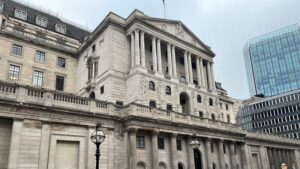The hike through the 5% barrier – to its highest level (5.2%) since it was set up in 1997 – was largely thanks to a healthy rise in utility prices, with electricity up 7.5% and gas up 13% year-on-year.
RPI, that includes mortgage interest payments, also shot up from 5.2% to 5.6%, reaching its highest level since the end of 1991.
The mainstream news will highlight the bare numbers and the increased cost of living with the prices of essential goods going up far more than wages or interest rates. Savers and those, such as pensioners, on a fixed income will undoubtedly suffer the most.
But investors and their intermediaries should be able to take a longer-term view and see inflation coming down over the next 12 months and more, to zero if Trevor Greetham, director of asset allocation at Fidelity is to be believed.
In his calculations he strips out the VAT increase in January this year (inflation falls to 3.5%) and then food and energy rises (down to 1.7%) and if commodities turn negative inflation reaches zero. If only it was that easy…
The picture, however, is much better for investors as the numbers have been very well reported and a rise in inflation is not a surprise. The impact on sterling and the gilt markets, certainly at the beginning of today, is minimal and gilt yields still offer relatively unattractive returns by comparison, with ten-year gilts at -3.1%.
As long as yields – and interest rates for cash – remain below inflation investors will see real returns fall. Instead, as Ana Armstrong, managing partner at Armstrong Investment Managers, suggests investors should look to high-yielding equities (not cyclical equities), agricultural commodities, Asian currencies and inflation-linked bonds.
It wasn’t that long ago that some were saying a little bit of inflation would be a good thing to help ‘inflate away’ some of the UK debt. Instead, investors are having to put risk back on the table to get past a 5% return as anything less is in effect loss-making.
Consensus though is that inflation will start to come down from early next year – maybe not quite to zero, but a sustained fall will follow a lower VAT rate and the slowdown in the rising prices we have seen again today.
Savers will lose out, investors still have the opportunity not to.







